In the world of innovative design, these industrial designers utilize the age-old material – clay – to create sustainable alternatives to electric appliances taking advantage of its porosity and evaporative cooling effect. Made from clay, these simple devices can preserve food and and moisten dry interior spaces in an eco-friendly electricity-free way.
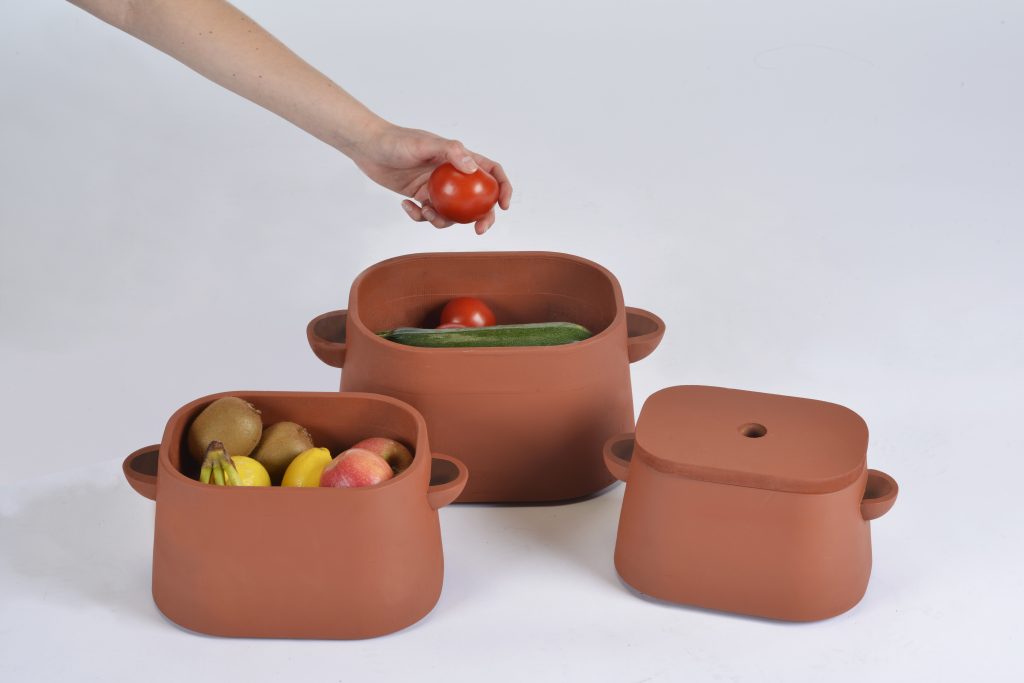
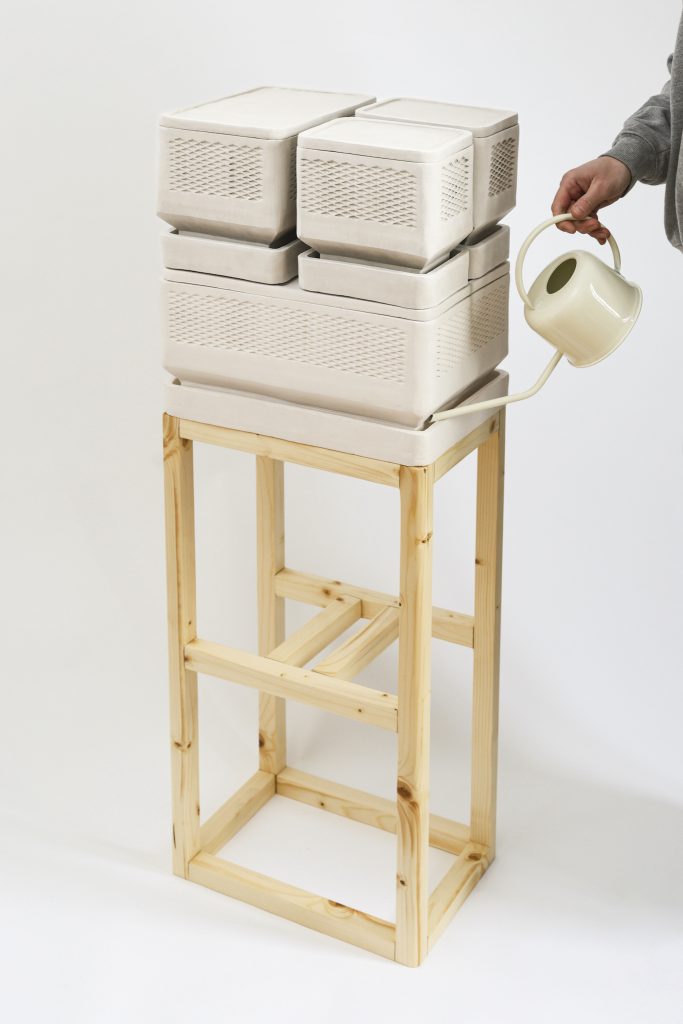
Tony by Lea Lorenz
After learning 10% of household energy is used by domestic fridges, designer Lea Lorenz has reinterpreted the traditional clay jug cooler method, to introduce Tony, a revolutionary portable refrigerator and food container that utilizes the power of evaporative cooling.
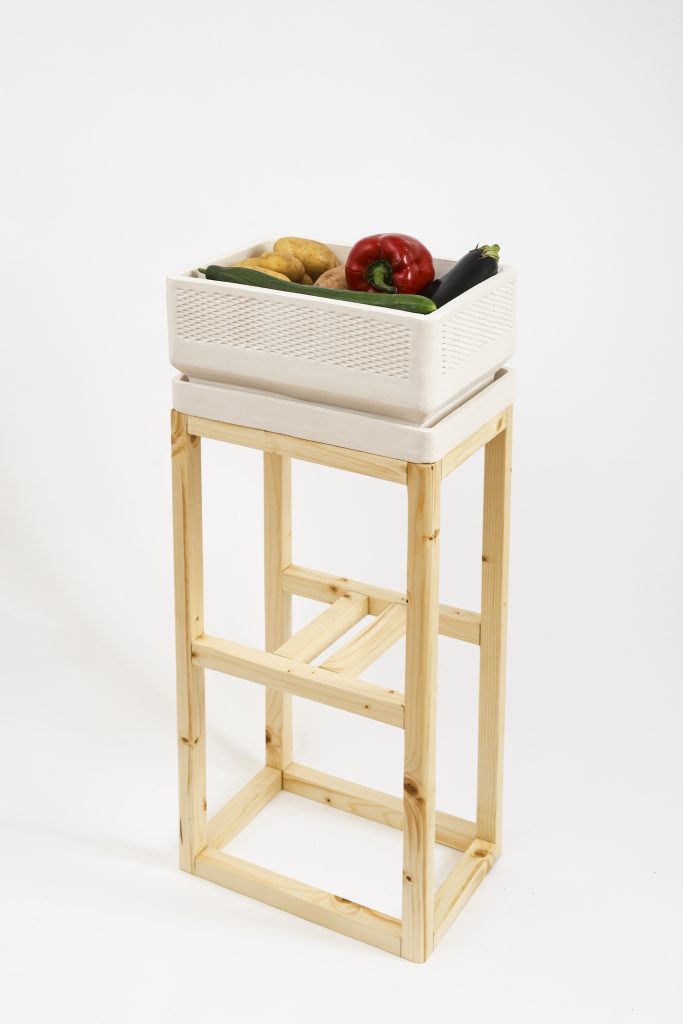
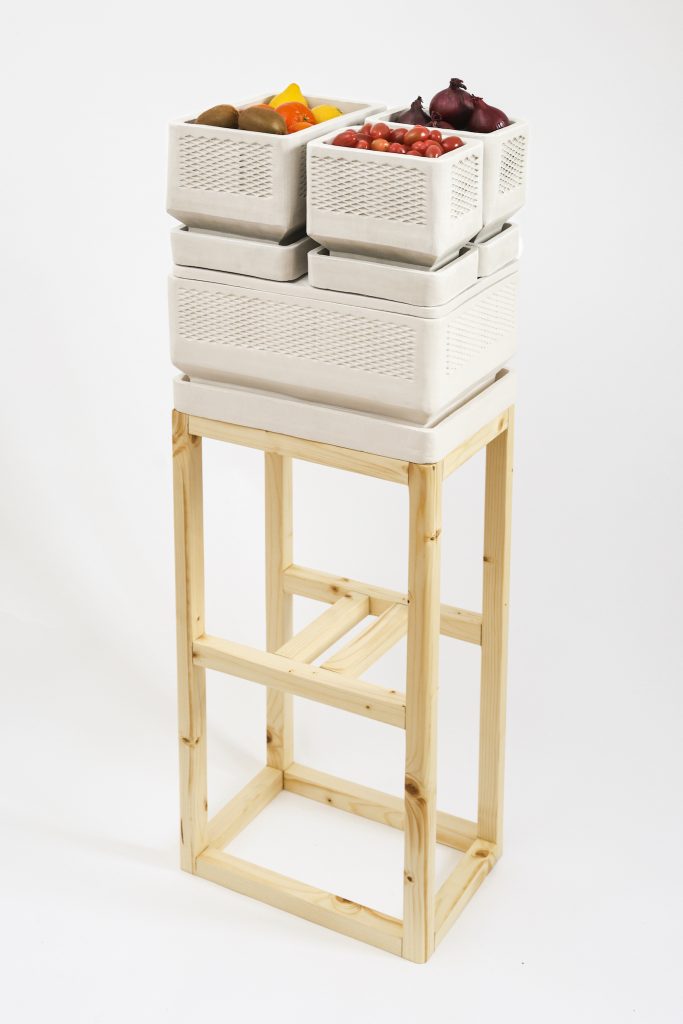
Tony by Lea Lorenz
The individual clay coolers are available in three different stackable sizes. Each consists of a water tank, a food container and a lid allowing each section to operate independently with its water supply. The designer opted for the porous raku clay for fabrication of the coolers after discovering through a series of experiments with different types of clay, for this particular material absorbs water most effectively and guarantees the optimal cooling effect.
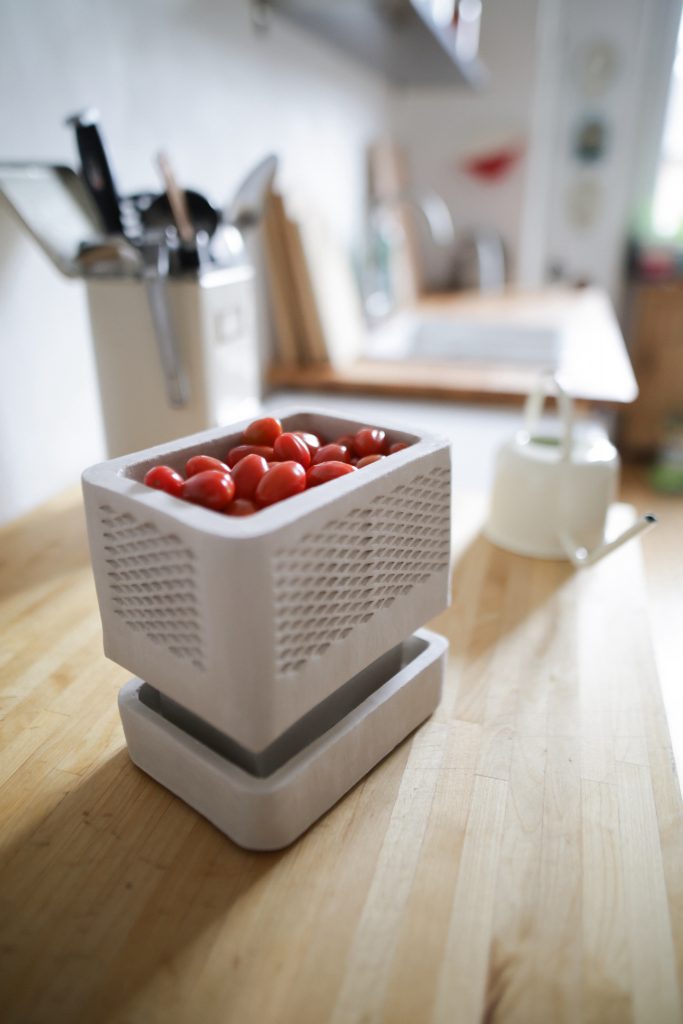
Tony by Lea Lorenz
The raku-clay used for production comes from the Westerwald region, Germany, which helps avoid long transport routes and hence emits less CO2. After production, the clay coolers are fired at the lowest possible temperature of 1 1000°C for minimal energy consumption. This ensures that neither the production of the cooler, nor extraction of the raw material, nor the use of the appliance release environmentally harmful substances.
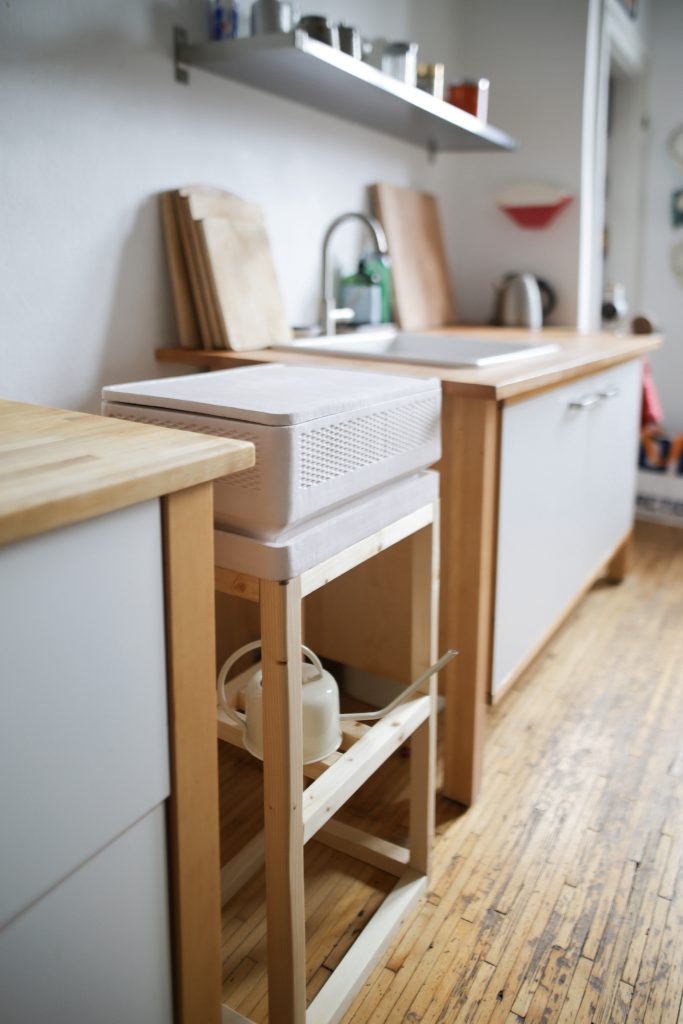
Tony by Lea Lorenz
The outer wall’s surface is meticulously subtractively machined to increase the surface area for enhanced water evaporation and a quicker drop in temperature inside. As the water absorbed from the tank evaporates on the walls of the food container, it brings the interior temperature to a range of 13°C-17°C without relying on electricity. This creates optimal storage conditions for selected fruits, vegetables and baked goods that are sensitive to extreme cold and do not benefit from conventional refrigerator storage. Those are precisely the foods that make up the majority of avoidable food waste.
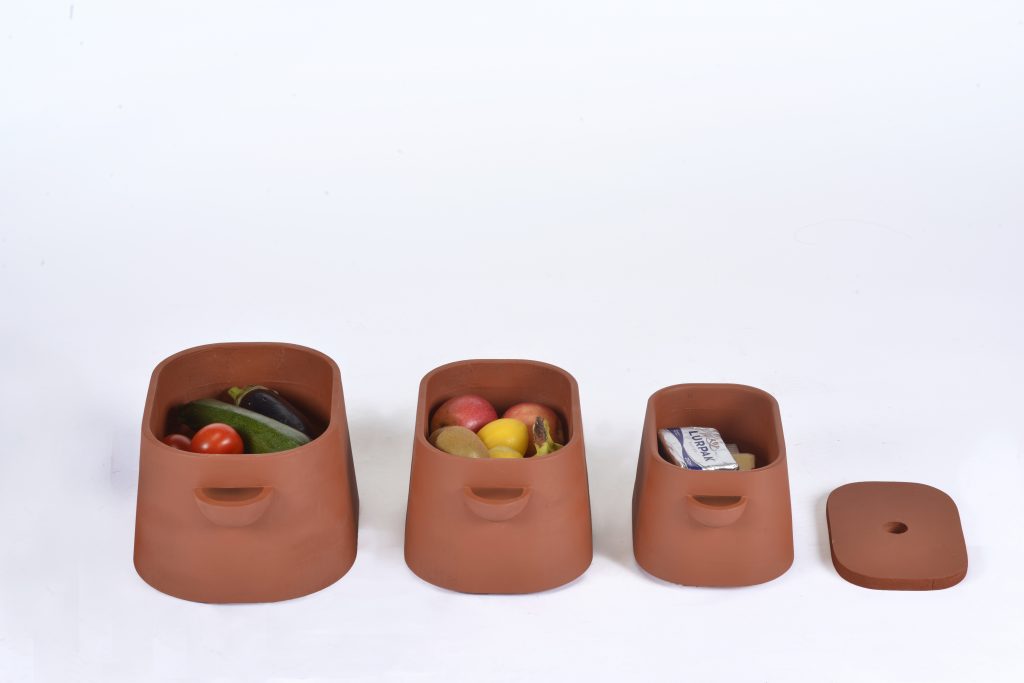
Terracooler by Ellie Perry (also header image)
Addressing the same issue, Terracooler by London-based designer Ellie Perry is a modern interpretation of the traditional Zeer pot or pot-in-pot refrigerator, an evaporative cooling refrigeration device that dates back to 3000BC and is still used today in such countries as India and Nigeria.
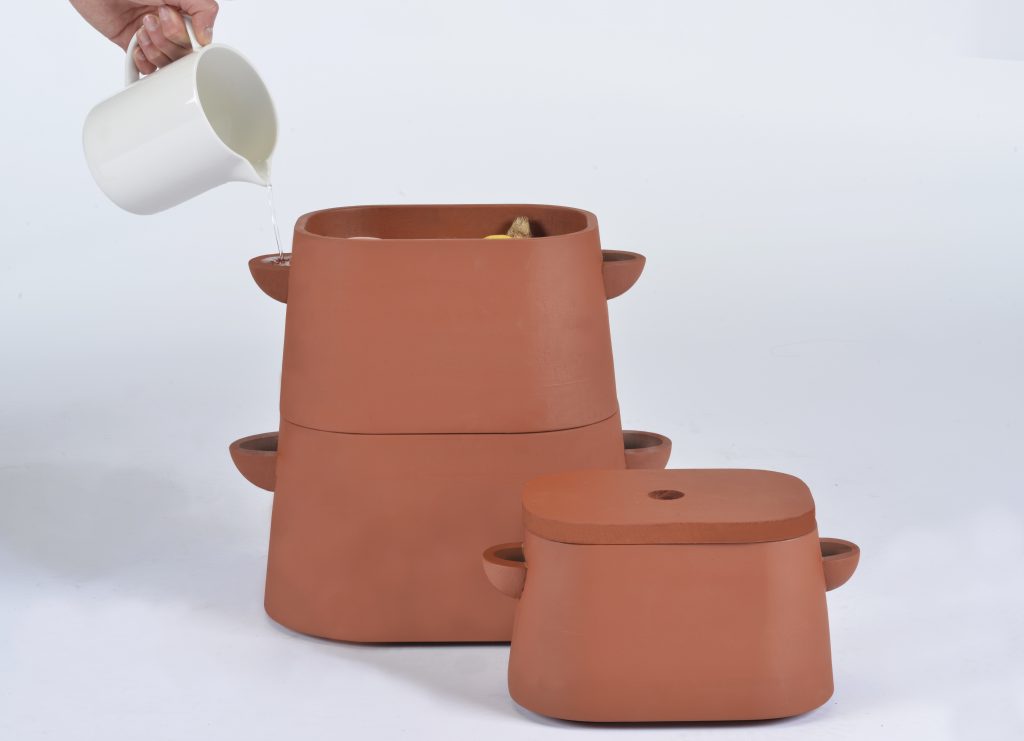
Terracooler by Ellie Perry
Just like Tony, the product functions using the porosity of the material it is made of – terracota, – that absorbs the water, cooling the food as it evaporates. Similarly, it reduces energy consumption for food that should not be stored in a fridge, like vegetables, fruit and dairy cool. The product does not require any electricity for operation, it only needs a source of water and some dry air.
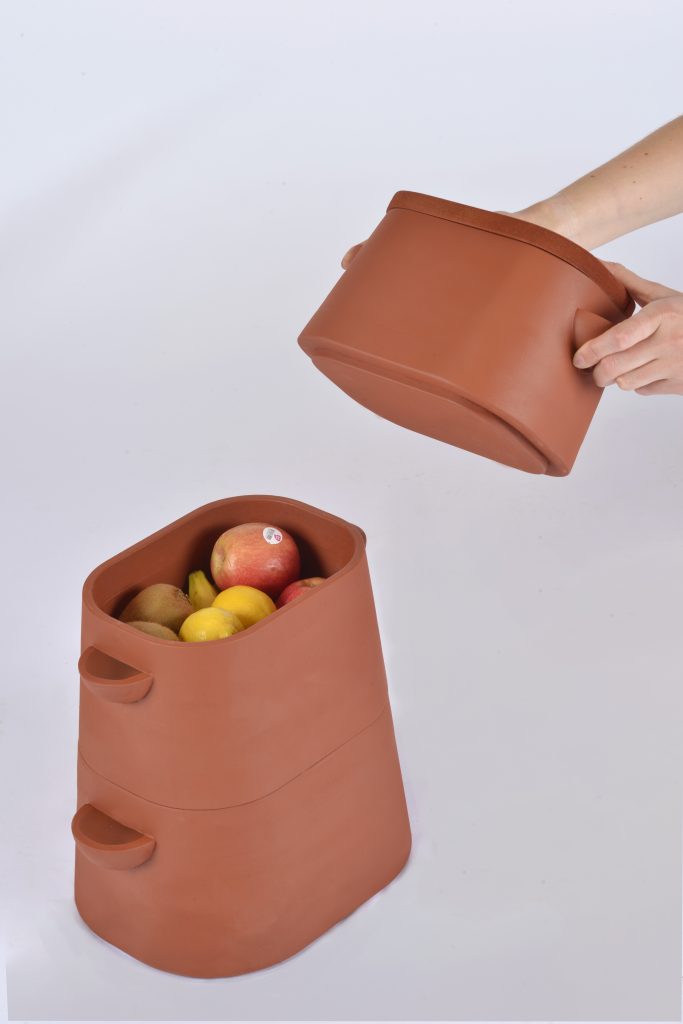
Terracooler by Ellie Perry
The designer produced a wooden model of her appliance via CNC milling before using it as a plaster mold to slip cast a version made from terracota clay. The resulting modular design is comprised of three tapered, double-walled slip cast pieces with built-in handles. Each piece is formed by two clay pots, the porous outer pot is lined with wet sand and surrounds a glazed inner clay pot where food items can be stored for refrigeration.
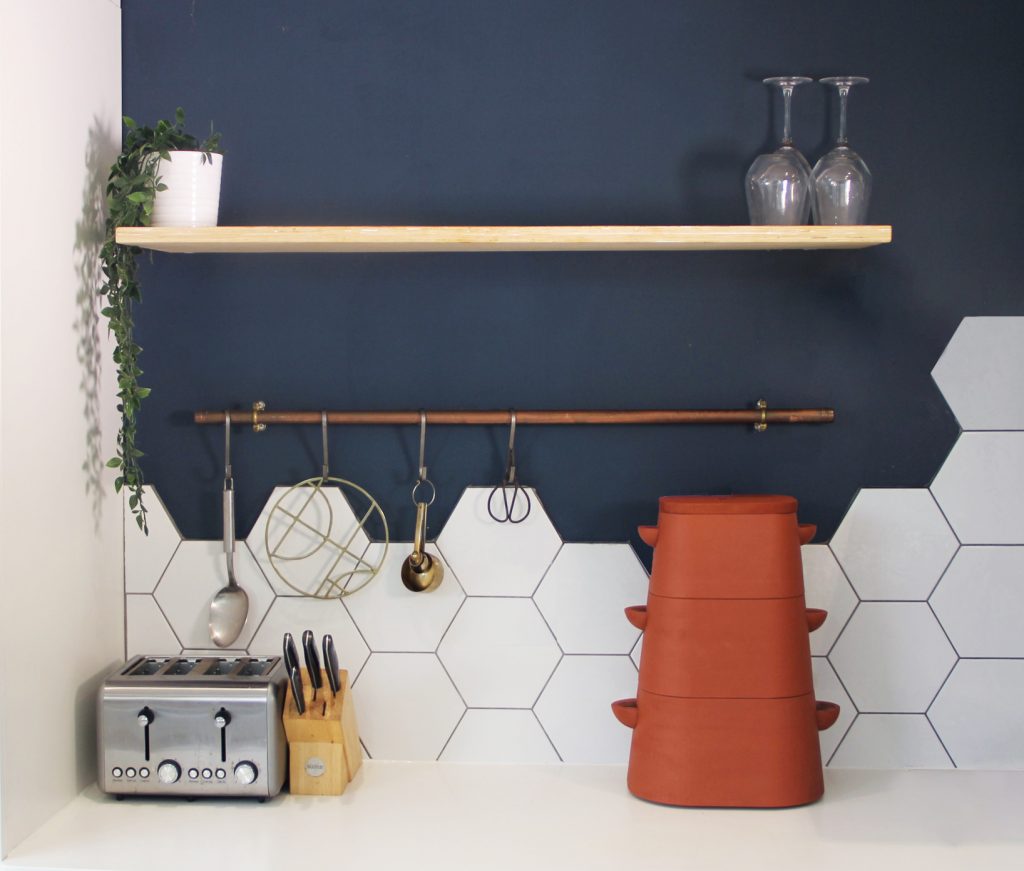
Terracooler by Ellie Perry
The handles on both sides of each individual pot also work as spouts for water to pour through and provide evaporative cooling. The tri-tiered pot-in-pot refrigerator can fit any kitchen counter and can be be disassembled for access to the food items inside each pot.
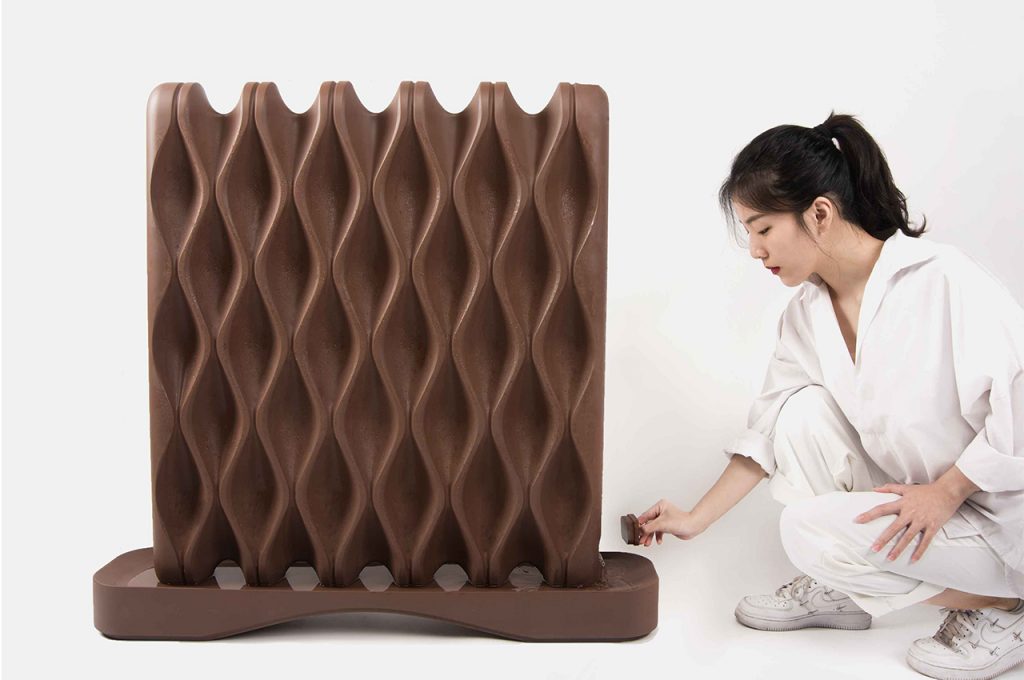
Coarse Pottery Air-Humidifier by Hou Haibo, Feng Jijie, Luo Li, & Yang Ruibing
Recognized by the Red Dot design award, the Coarse Pottery Air-Humidifier, developed by a group of students from Guangzhou Academy of Fine Arts and designers from Shenzhen Changsen Trading Company led by Haibo Hou, uses terracotta to function as a sustainable alternative to electric air humidifiers.
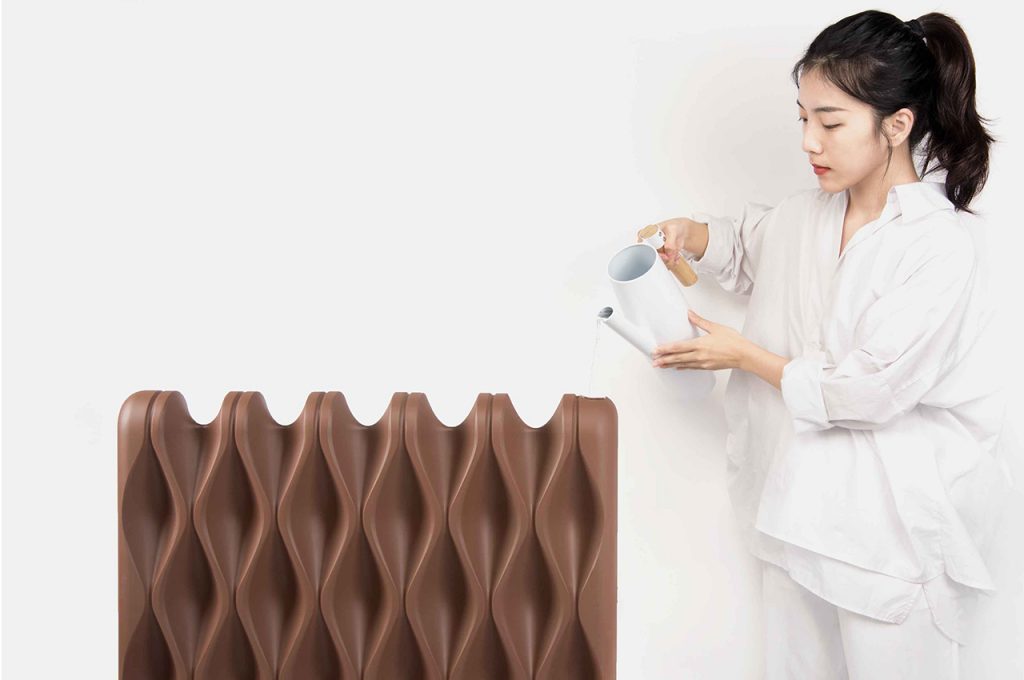
Coarse Pottery Air-Humidifier by Hou Haibo, Feng Jijie, Luo Li, & Yang Ruibing
The air humidifier is made from a type of clay that is porous by its organic composition and possesses just the right amount of moisture absorption. When the user adds water to the humidifier’s basin, it gradually rises and evaporates through tiny cavities on the top to moisten the interior space’s air.
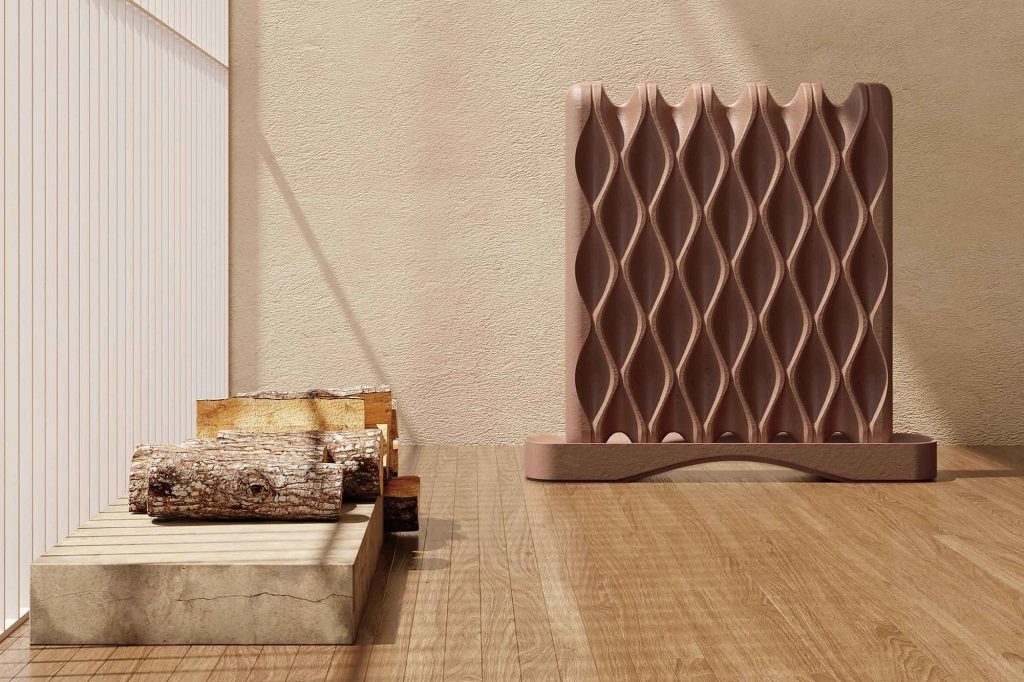
Coarse Pottery Air-Humidifier by Hou Haibo, Feng Jijie, Luo Li, & Yang Ruibing
Its beautiful and rhythmic wave-like surface form is not only supposed to increase the evaporation area of water to moisten the whole indoor environment. It also serves as an elegant accessory in any modern interior.